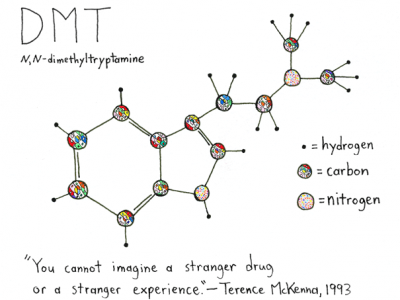
Dr Eamonn Walsh, Senior Lecturer in Neuroscience, and his team of researchers at King’s College London wants to know what makes some people more susceptible than others
Dr Eamonn Walsh, Senior Lecturer in Neuroscience and his team of researchers at King’s College London wants to know what makes some people more susceptible than others.
Last night, at a Pint of Science event on hypnosis in south London, Dr Walsh talked about how hypnosis has benefited all sorts of scientific research, way beyond the understanding of hypnosis itself.
It can even be used to recreate the symptoms of serious mental health problems in a test environment.
The neurologist explained that 10 per cent of the population are highly hypnotisable. This means there is cohort of people, with varying degrees of susceptibility, who in a controlled environment can experience the effects of hypnosis, including the experience of hearing thoughts that are not your own.
Thought insertions are a form of delusion that makes you think you’re thinking or hearing someone else thoughts. You might not know where they’re coming from, but it’s distant from your own voice. It’s a frightening experience with traumatic implications for the sufferer.
A common symptom of psychosis, neurologists want to understand what happens what happens in the brain of schizophrenic patients when they suffer one of these episodes but were faced with serious ethical problems.
“There are ethical issues with asking a patient with schizophrenia to go into the scanner in the first place. How do you get the timing just right, it’s not easy.” stated Dr Walsh. “The brain of someone with schizophrenia may be comprised in some way. It may be pathological due to the nature of the disorder, or they may be on medication.”
So instead of using vulnerable patients that could flout all sort of ethical practices, the researchers at King's College London decided to model schizophrenia in the brains of healthy patients by using hypnosis.
He likened the process to any other practice when you want to simulate a risky situation in a safe environment.
“It’s like how an engineer might use a computer to build a model of a bridge, before they go and actually build a bridge.”
What they found was when people were experiencing thought insertions, there was a decrease in blood flow in certain areas of the brain. This information could be indispensable for the future of effectively medicating the symptoms of psychosis.
“It means we can target drugs to specific parts of the brain to help people suffering from thought insertions.”
But why are some people more susceptible in the first place? In separate series of tests, Dr Walsh’s team scanned the brains of 39 hypnotisable people to see what happened when they experienced hypnosis. The volunteers were all carefully selected. Despite having different levels of susceptibility, from low to high, the scientists found their brains all had one thing in common. In the middle temporal gyrus, just above the ears, they all had more grey matter.
The brain is made of both white and grey matter. Grey matter lies on the outside of the brain and is essentially the processing part – it does all the thinking.
Dr Walsh ’s team aren’t sure what it means but it might be related to how we understand things. “These areas are very important for encoding language and processing language.”
White matter acts as the conduit between the different parts of grey matter; they send all the messages to different parts of the brain. The scientists found no was that there was no different in white matter in those who are more susceptible.
But in the same experiment, they found there was less grey matter in the visual areas. “We’re unclear as to what that means, it may be that less grey matter is related to the experience of optical illusions, but that's only a thought.”




